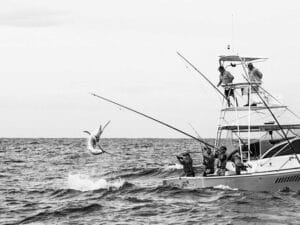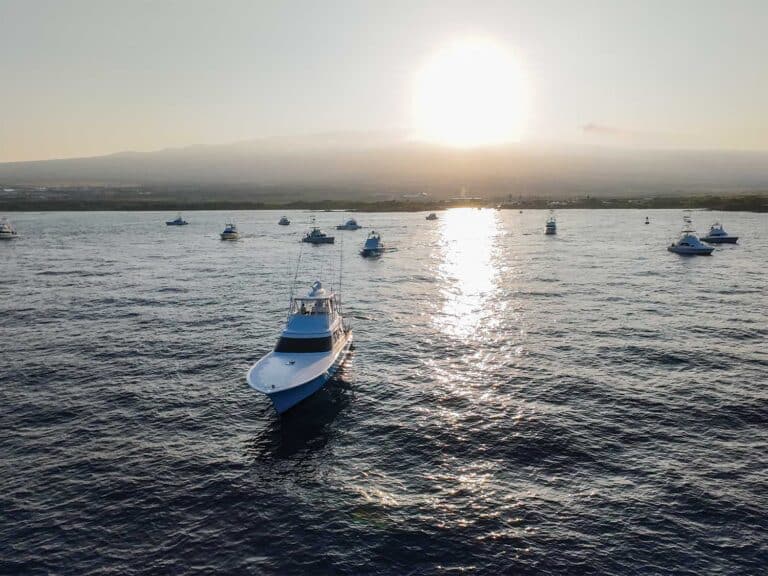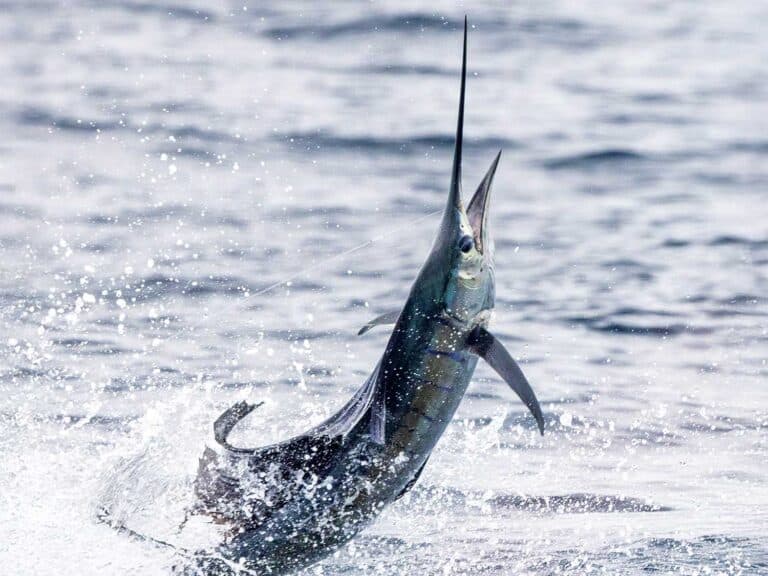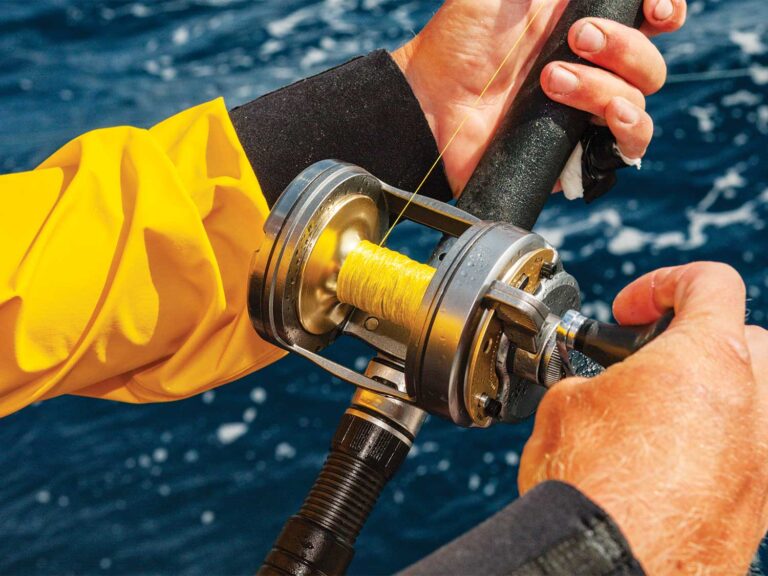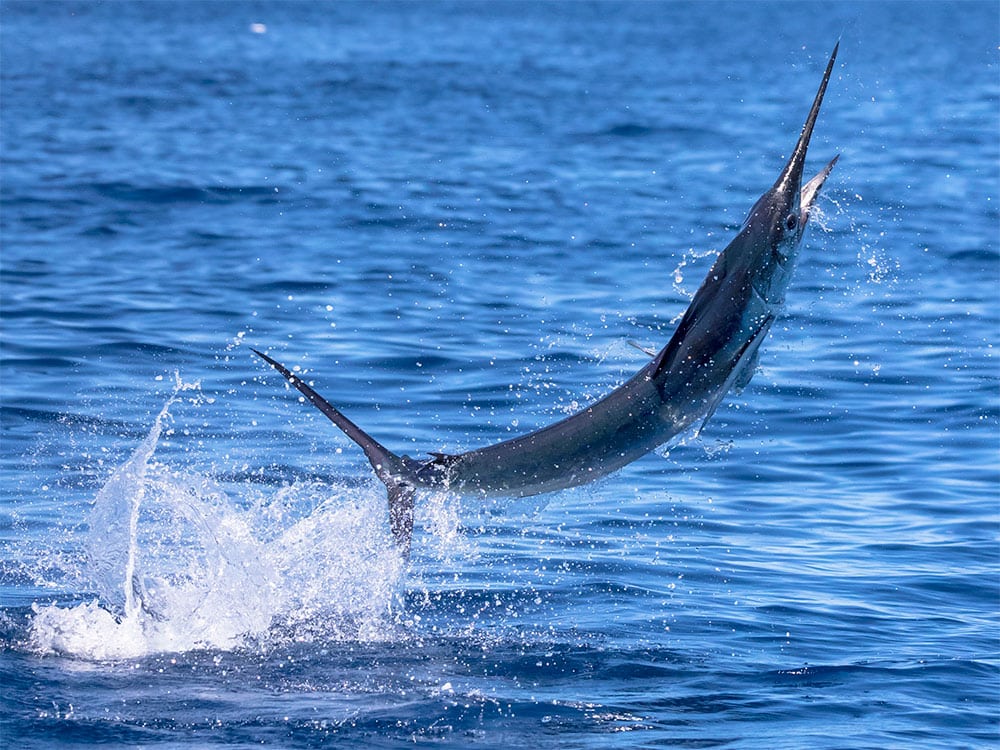
The sixth year of the IGFA Great Marlin Race is officially in the books, with a total of 57 tags deployed on blue, black and striped marlin in seven different countries. Altogether, these fish swam a combined linear distance — from the location of the tag deployment to the location of the tag pop-up — of 16,429 nautical miles, collecting 2,632 days of tracking data. The fish that swam the farthest last year and accounted for 8.5 percent of the total distance was an estimated 80-pound striped marlin that swam an incredible 1,397 nautical miles in 216 days. Wide-Ranging Marlin Striped marlin are the most broadly distributed billfish in the Pacific Ocean. Think of their range in the context of a reverse C, with the base centered on the Central American coast and extending all the way to the northwestern and southwestern Pacific toward Japan and Australia. Genetic research indicates that there are at least three stocks of striped marlin: Australia/New Zealand, Japan/Hawaii/Southern California and Mexico/Central America, and perhaps even a fourth stock of mature fish in Hawaii.
Their broad distribution also necessitates that they are managed as different geographical units. The Inter-American Tropical Tuna Commission manages striped marlin in the eastern Pacific, while the Western and Central Pacific Fisheries Commission manages stocks in the western and central Pacific as well as the southwestern Pacific region. Currently, the eastern Pacific stock is the only stock being managed well; the others are in an overfished condition.
Long Migrations
While this is certainly good news for places like Mexico and Central America, anglers in Southern California shouldn’t be fooled that this bodes well for them too. Even though the Southern California and Mexico striped marlin fisheries are in close geographical proximity, striped marlin caught in Southern California’s fishery most likely originate from Japan or Hawaii and not from Mexico or Central America.
The seasonal movement of striped marlin into California waters varies considerably with prevailing oceanographic conditions like El Niño.
Furthermore, there is no evidence that striped marlin spawning occurs in Southern California waters, and it is thought that, at the end of the season, those fish might utilize the North Equatorial Current to migrate back to their spawning grounds off Japan. They might even represent a population sink with no reproductive contribution to other populations.
While genetic analyses indicate that California’s striped marlin belong to the Japan/Hawaii stock, satellite tagging has clearly demonstrated that marlin caught in California readily migrate south to Mexico as the water temperature cools. What’s interesting is that these fish don’t usually show up in genetic samples obtained from Mexico. Scientists think there might be several reasons for this.
First, the southern migration of California fish coincides with the spawning season for Mexico’s striped marlin. During that time, fishing effort in Mexico focuses on large, well-known spawning aggregations and may effectively allow the California fish to transit through the area without being caught for samples. Second, California fish might not reside long in Mexican waters and might continue to move south to follow currents that will eventually take them back to Japan.
Look to the West
So, if you’re a Southern California striped marlin angler and you’re interested in knowing the future of your fishery, don’t look to your neighbors to the south for an indication of how things are doing. Instead, look to the west and the status of the western and central Pacific stock. Right now, things don’t look too good; the stock has been, with the exception of 1982 and ’83, experiencing overfishing since 1977, and the current spawning-stock biomass is 61 percent below what would produce maximum sustainable yield.

